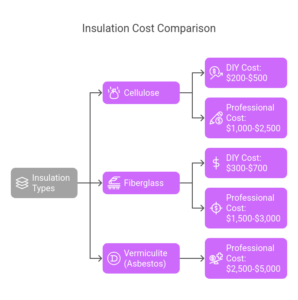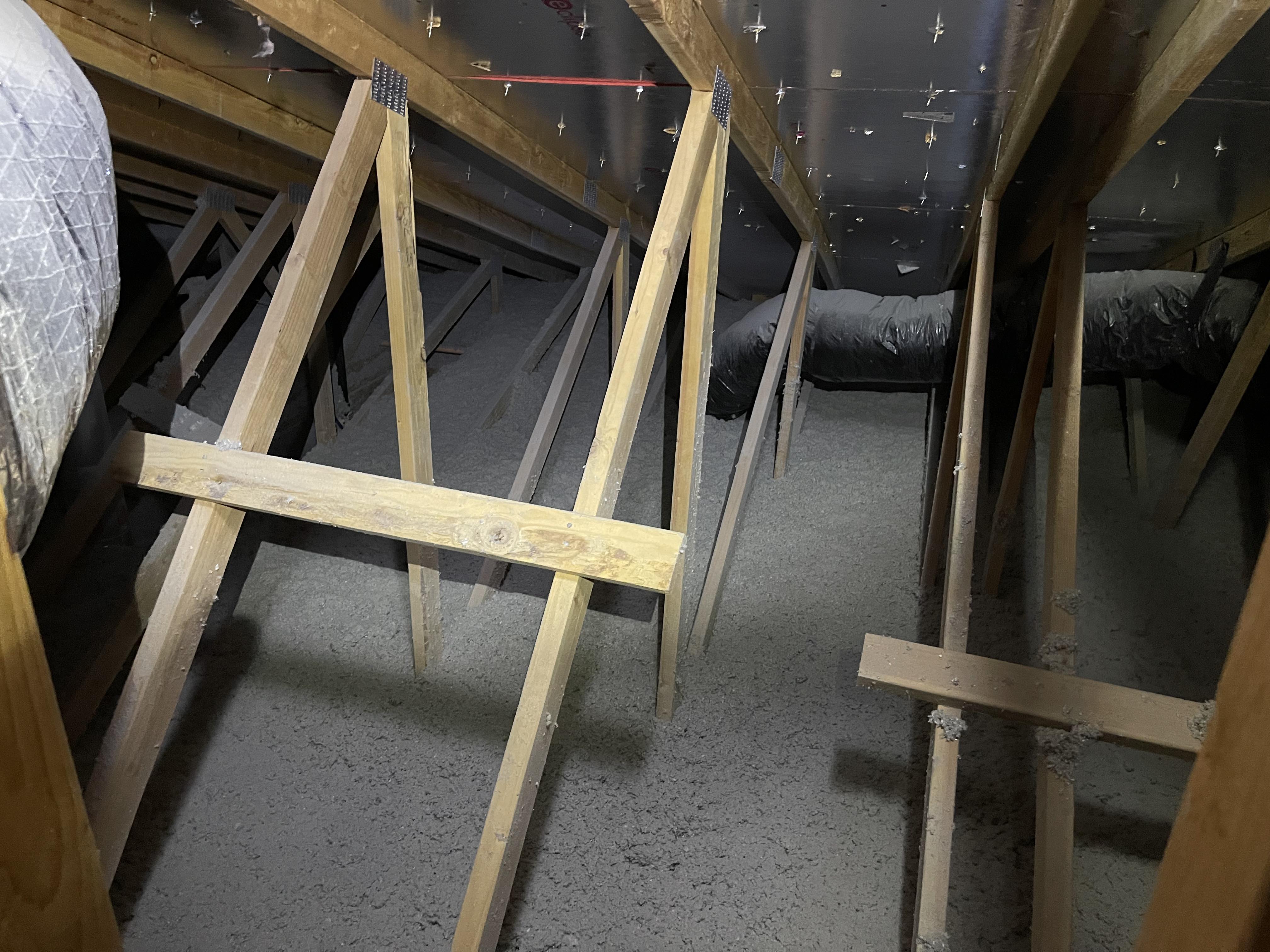Although removing blown-in insulation might seem easy, is it really safe? Let’s find out!
Did you know that the blown-in insulation can contain hazardous materials like asbestos or mold? According to the U.S. Environmental Protection Agency (EPA), not dealing with these materials can cause serious health risks. Understanding the risks of dressing material and the proper ways of removing insulation is necessary so you can do it safely. Experts at My Insulation Guy offer the best insulation removal services and protect you from any kind of harm.
In this guide, we will explain whether it is safe to remove blown-in insulation on your own. Stay tuned till the end!
Reasons to Remove Blown-In Insulation
There are many reasons to remove insulation from the attic space:
- Health Concerns: Older insulation may contain mold, allergens, or asbestos, which pose health risks.
- Energy Efficiency: Replacing existing insulation with newer, higher-rated insulation can improve energy efficiency in your home.
- Pest Problems: Rodents and insects often nest in insulation, leading to further issues.
- Remodeling Preparation: If you are planning to do any significant remodel work, you’ll want to remove all old insulation that may be in the way.
- Fire Hazards: Some older insulation products are made from highly combustible materials.
- Odors and Air Quality: Soiled or damaged insulation can create unpleasant smells and poor indoor air quality.
Can You Remove Blown-In Insulation Safely By Yourself?
The quick answer is: maybe. If the material does not contain toxins like asbestos or mold, you may be able to remove it yourself. Depending on the material, you may want to hire an expert for removing blown-in insulation and to assist with hazardous materials.
Consider the Following:
- Age of the Insulation: Older insulation may contain asbestos, which is highly hazardous to your health.
- Mold or Mildew: Mold exposure can lead to respiratory issues.
- Amount of Debris and Dust: Fine material could make it hard to breathe during the removal process.
- Availability of Proper Equipment: Industrial vacuum and PPE may be needed.
- Legal and Safety Compliance: Each state has regulations on how to remove and dispose of insulation material properly.
How to Remove Blown-In Insulation Safely?
If you feel comfortable doing it yourself, use these procedures to help you complete the process safely.
Step 1: Gather Necessary Tools
You need to make sure you have the following items before proceeding:
- Heavy-duty vacuum (for vacuum attic insulation)
- Protective clothes (gloves, goggles, and coveralls)
- Respirator mask (to protect yourself from swallowing anything airborne)
- Large plastic bags (for bag insulation for disposal)
- Ladder and lighting (to move around in the attic safely)
- Plastic sheeting (to seal off other areas and in case contamination may occur)
- HEPA filters (to capture dust and germ particles)
Step 2: Identify Insulation Type
- Cellulose Insulation: Made of recycled paper, simple to vacuum up.
- Fiberglass Insulation: It has fibers of glass that may irritate skin and lungs.
- Vermiculite Insulation: May contain asbestos, and should be removed by a professional.
Warning: If you suspect Asbestos, stop removing blown-in insulation by yourself and refer to the advice of a professional.
Step 3: Getting the attic ready
- Shut down HVAC systems so that you do not spread contaminants.
- Seal vents and doors to limit dust movement.
- Cover plastic sheets to protect your home from insulation debris.
- Make sure there are no exposed wires or hazards.
Step 4: Begin Removal of the Insulation
- Utilize an Industrial Vacuum: A vacuum with great power makes the vacuum attic insulation much easier and more manageable.
- Lessen the Area You Work: When you are removing insulation, you are going to create dust. Smaller sections reduce the potential build-up of excessive dust.
- Bagged Insulation Removal: In double-bagging the removed insulation, you can help prevent contamination.
- Look for Contaminated Areas: You are going to need to do a complete inspection of the attic prior to finishing.
- Dispose of Insulation Properly: Obey the local disposal requirements.
Step 5: Clean and Inspect the Attic
- Wipe surfaces to remove any leftover dust and debris.
- Look for mold or signs of pests.
- Add new insulation if needed.
- Seal any openings and holes to improve your home’s energy efficiency.
When to Get Professional Help?
Though DIY removal is possible, you may want the professionals to help if any of the following apply to your situation:
- Your insulation has asbestos, mold or a pest problem.
- The insulation is hard to reach.
- You don’t have the necessary safety equipment.
- You want to comply with local regulations.
Cost of Removing Old Insulation From Attic
The cost of removing old insulation from attic varies based on attic size and insulation type:

Source: HomeAdvisor, 2025
Professional Advice on Insulation Removal
John Peterson, Home Insulation Professional:
“Most homeowners avoid the risk of doing this themselves. If there’s even a remote possibility of asbestos or mold, have this done by a professional.”
Make Your Home Safer and More Energy Efficient
Properly removing blown-in insulation is crucial to avoid any health risks. If you are uncomfortable or uncertain about the safety of doing it yourself, the best option is to call a professional like My Insulation Guy. Don’t risk your health or your home—make a safe, clean, and energy-efficient home today!
FAQs
- How do I determine if my attic insulation contains asbestos?
Asbestos insulation can be present in homes built before 1980. If you are unsure, hire a professional to take a look.
- Is it possible to use my household vacuum cleaner to clean away the old blown-in insulation?
Absolutely not! Household cleaners are incapable of dealing with pieces as delicate as insulation dust. A specialized, powerful industrial vacuum that can safely remove insulation will need to be used.
- Approximately how long is it going to take to remove insulation from an attic?
The insulation removal time will differ by attic size, but for a DIY apprenticeship, it will take you 1-2 days. A crew of professionals can get that done in hours.
- Can I reuse my old attic insulation?
Old insulation is not effective and can expose a user to harmful contaminants. Therefore, we don’t recommend reusing them.
- What steps can be taken after the insulation is removed from the attic?
Once you have removed the insulation, you should clean the attic out and then install new, energy-efficient insulation.

